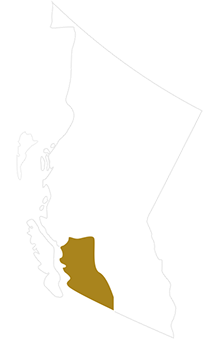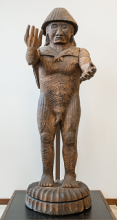JOURNEY
Origin
The Cowichan of the past, like today, were anchored in our families. Through kinship, we are related to friends and neighbours throughout our traditional territory. – from the Cowichan Tribes website, November 2019.
Known as the People of the Warm Land, the Cowichan are a part of a larger First Nations group referred to as the Coast Salish People. The Kwa’mutsum village of Qw’umqwiimut, where these house posts were created, was on Cowichan Creek near the present-day city of Duncan on the east coast of Vancouver Island.
Puykwilum’s house had stood for a long time at the end of the village beside Cowichan Creek. When the house collapsed about 1903, the posts were moved to an adjacent house owned by his son Edward Paul and installed on the outside walls. Over time, changes were made to the house and to the posts.
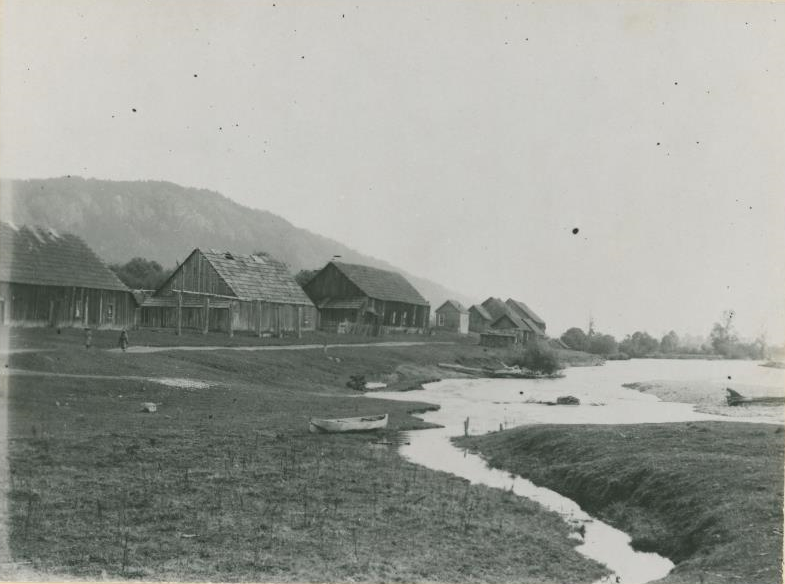
View of Qw’umqwiimut, probably in the early 1930s. Edward Paul’s house was downstream, at the other end of the village. E. W. A. Crocker (Trio) photograph. PN 11756.
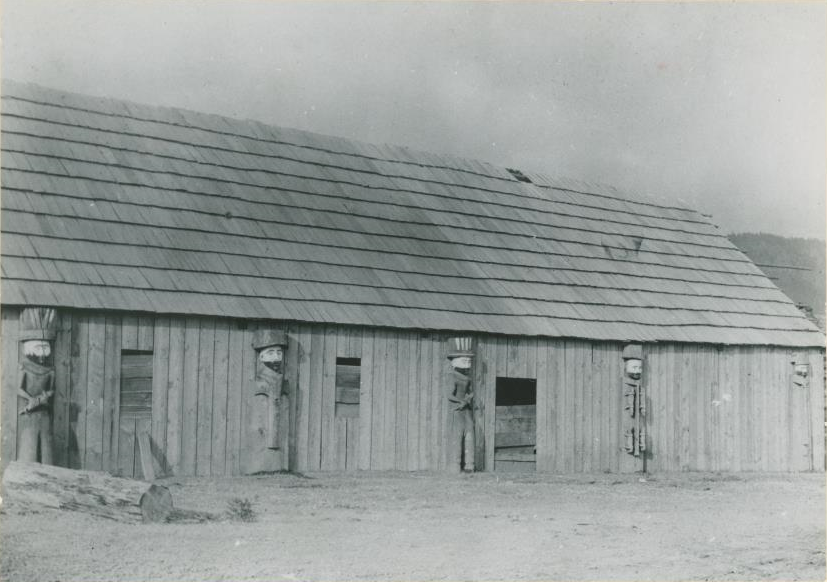
The house posts on the front of Edward Paul’s house, 1903. Church photograph. PN 1479.
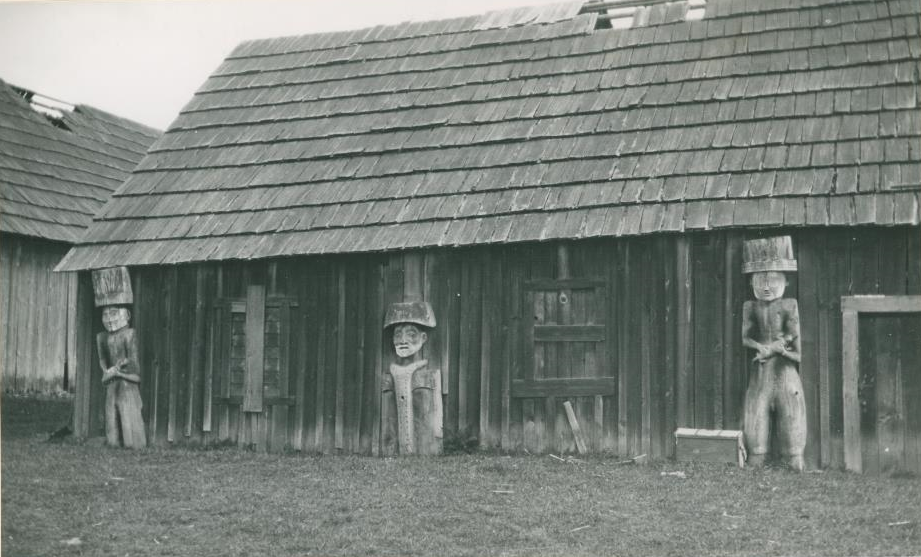
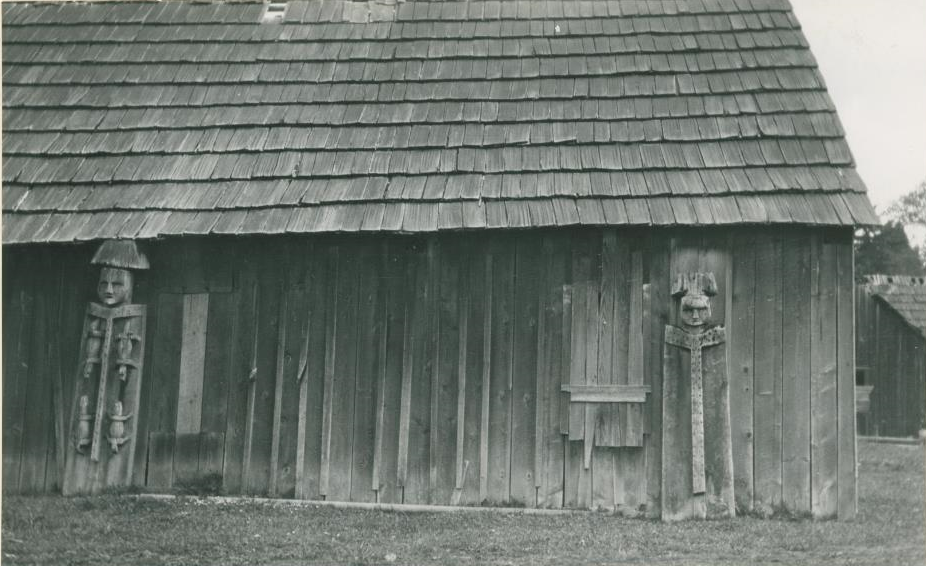
Over time, changes were made to the house and to the posts, which in this 1929 two-part panorama shot are shorter and more weathered than they were originally. Newcombe collection photographs. PN 6522, 6523.
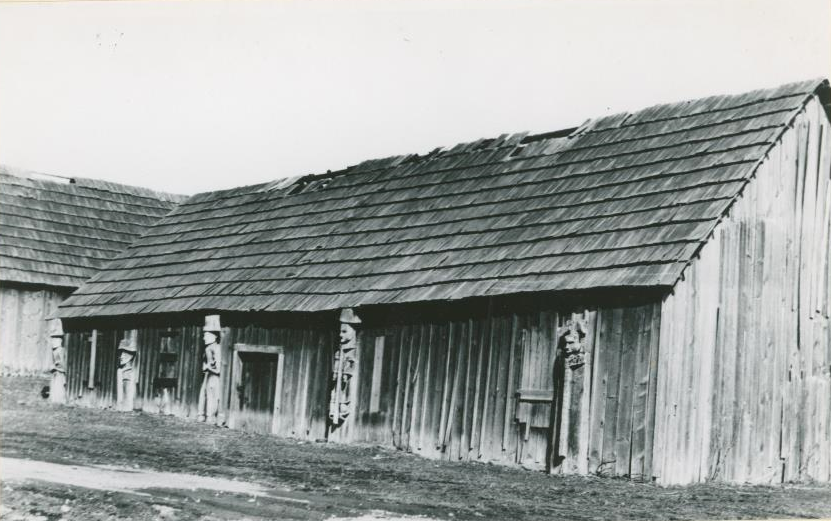
A post card made from an E. W. A. Crocker (Trio) photograph, undated but probably around 1930. PN 10521.
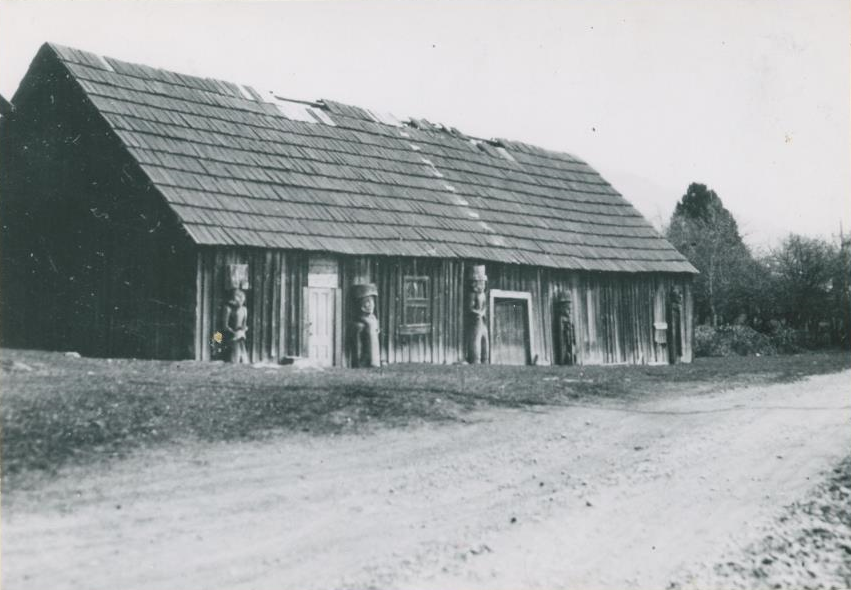
The house in 1935. William A. Newcombe photograph. PN 1384.
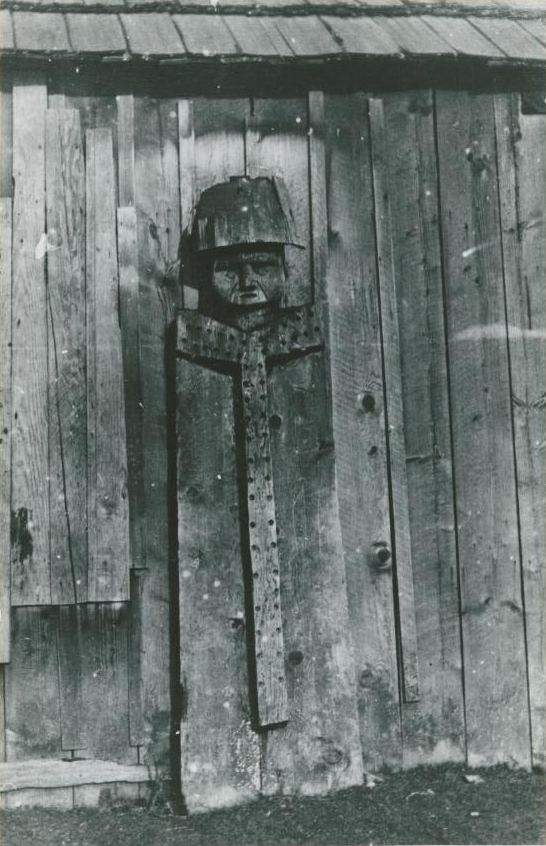
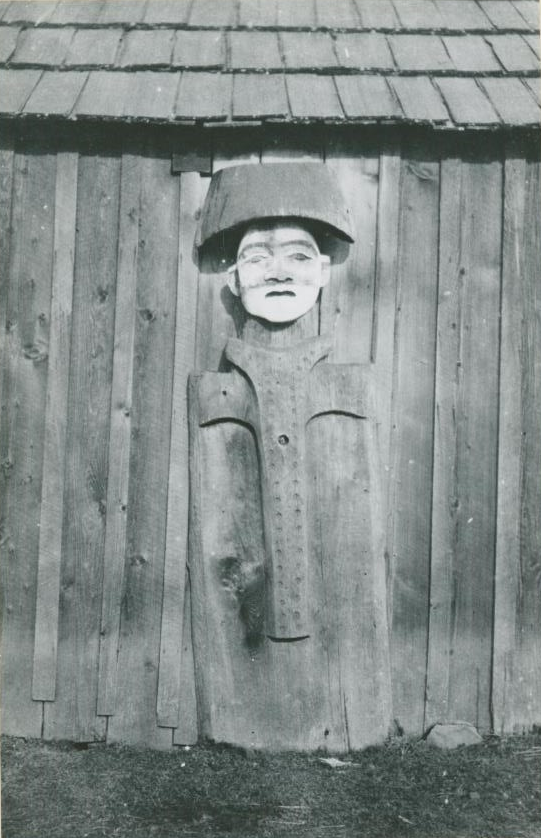
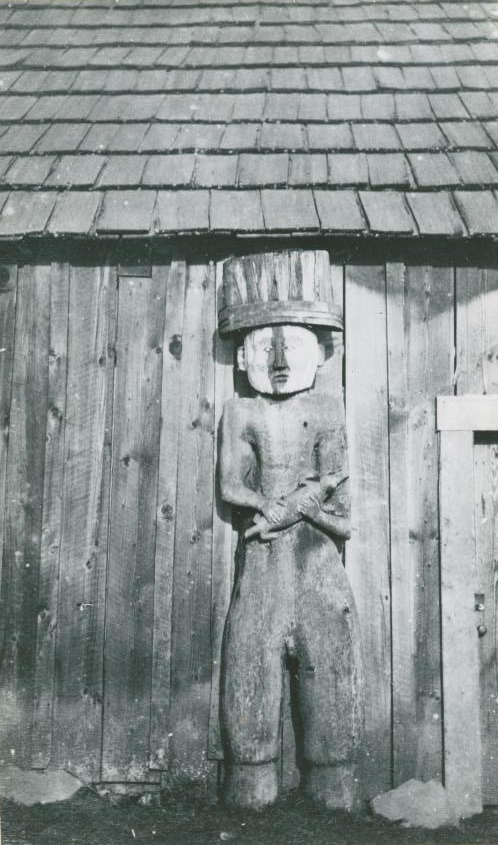
Three of the house poles, possibly in the 1920s. J. P. Anderson photographs. PN 10524, 10525, 10526.
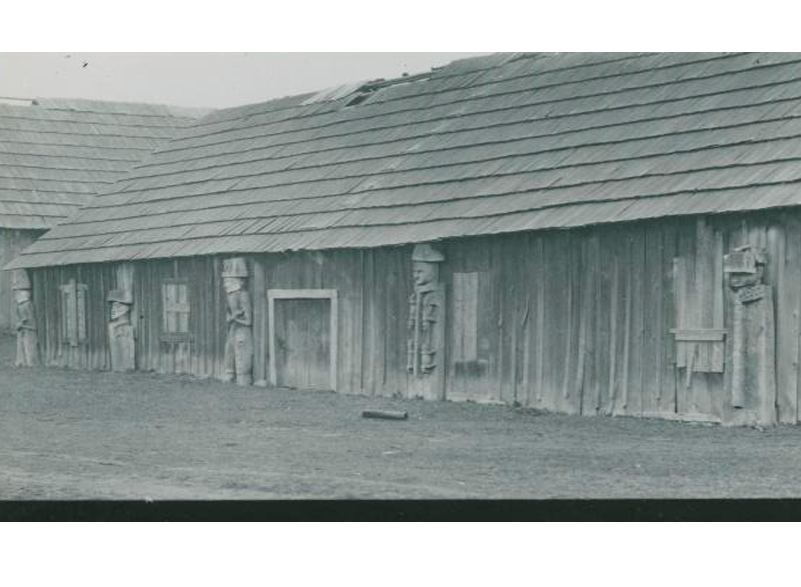
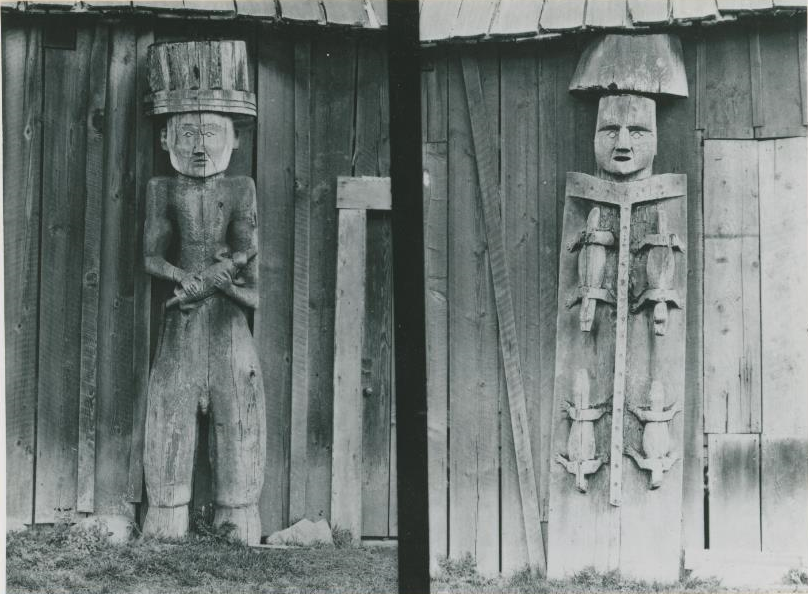
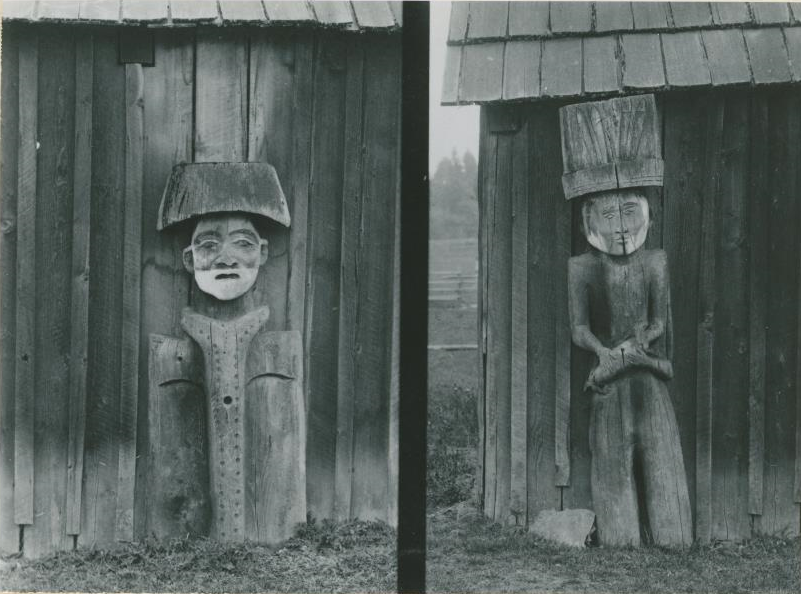
The house posts about 1935. E. W. A. Crocker (Trio) photographs. RBCM 11744, 11745, 11746.
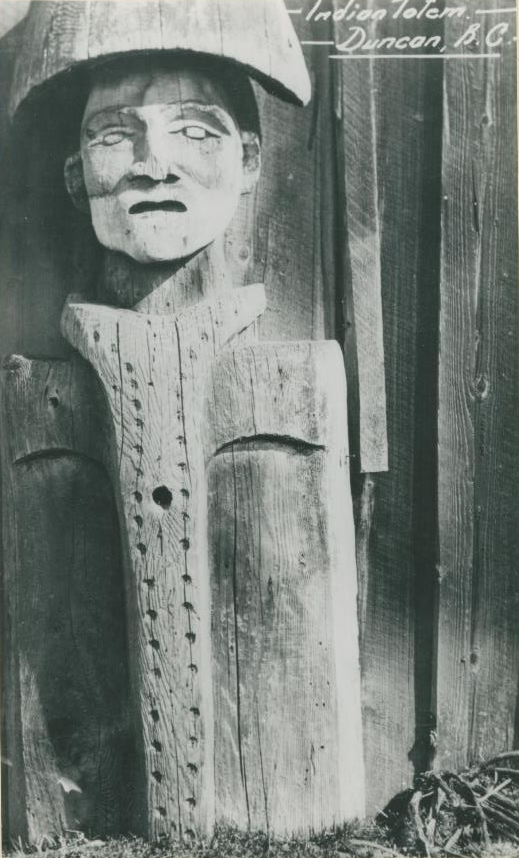
The posts were popular subjects for photographers. Some, like this image, were featured on postcards. PN 6500.
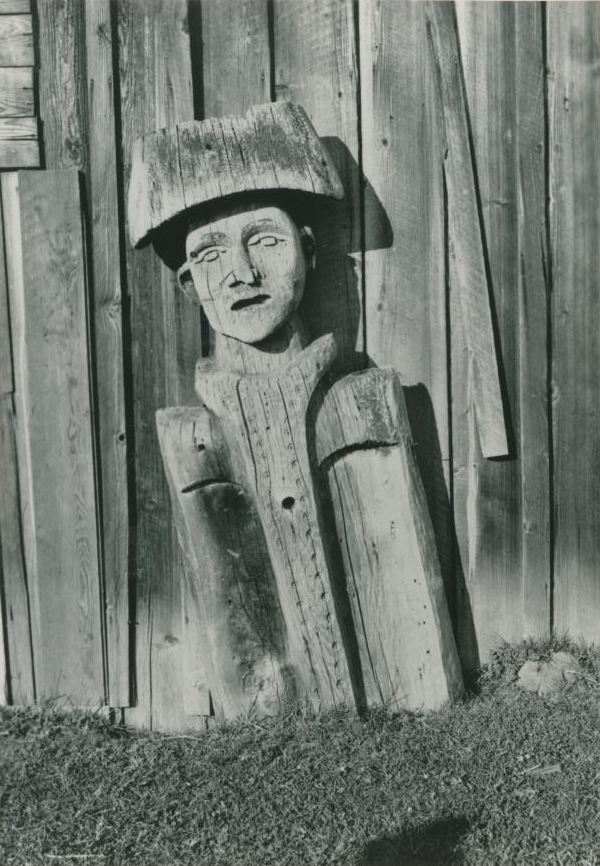
One of the house posts shortly before the posts were removed. Photographer Fredericka de Laguna dated the image 1938 but by that time the posts were no longer on the house. PN 6270.
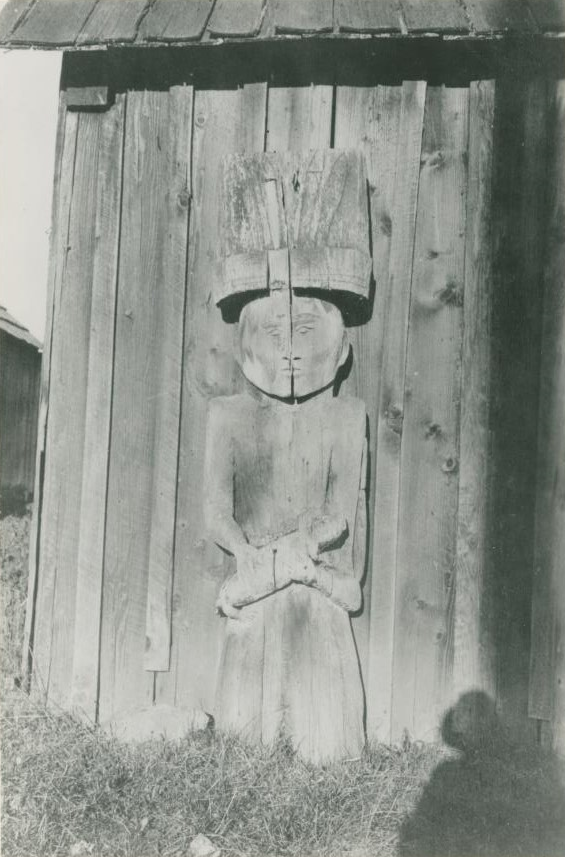
A weathered house post photographed in 1936, just before all five house posts were removed from the house. F. J. Barrow photograph. PN 14710.
JOURNEY
Removal
When the house collapsed about 1903, the posts were moved to an adjacent house owned by his son Edward Paul and installed on the outside walls. Over time, changes were made to the house and to the posts.
When Edward Paul's house was taken down about 1935, the five house posts were acquired by Mr. and Mrs. Herbert Corfield and erected near their store, The Canoe, at Koksilah near the city of Duncan north of Victoria.
The Corfield family operated an auto camp and picnic grounds and sold groceries, hardware, and Indigenous arts and crafts in their store. But they specialized in the sale and promotion of Cowichan sweaters, working with many Cowichan area knitters to support and market this art form, which has become a symbol of British Columbia and of Canada. In 1944, Mr. and Mrs. Corfield gave the house posts to the Royal BC Museum.
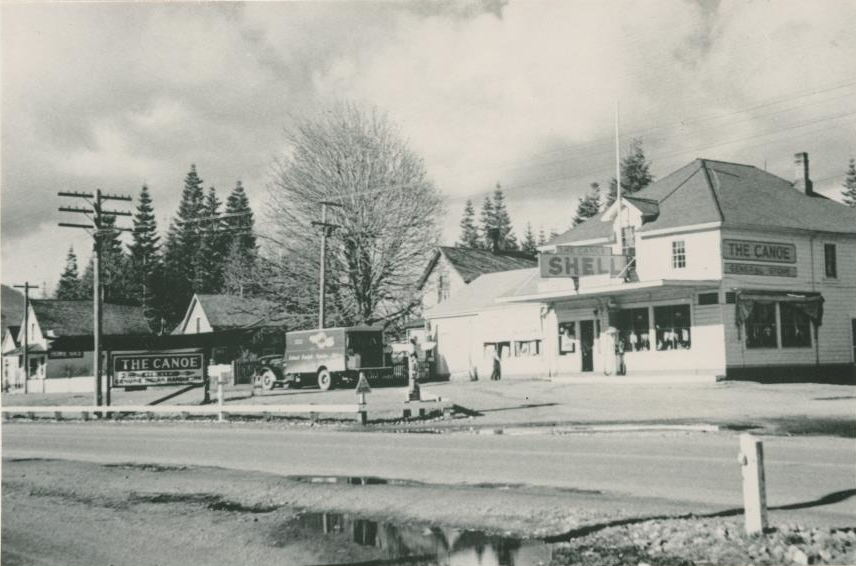
The Canoe store near Duncan at Koksilah, 1938. The posts were erected behind the store. Corfield family photograph. PN 17597.
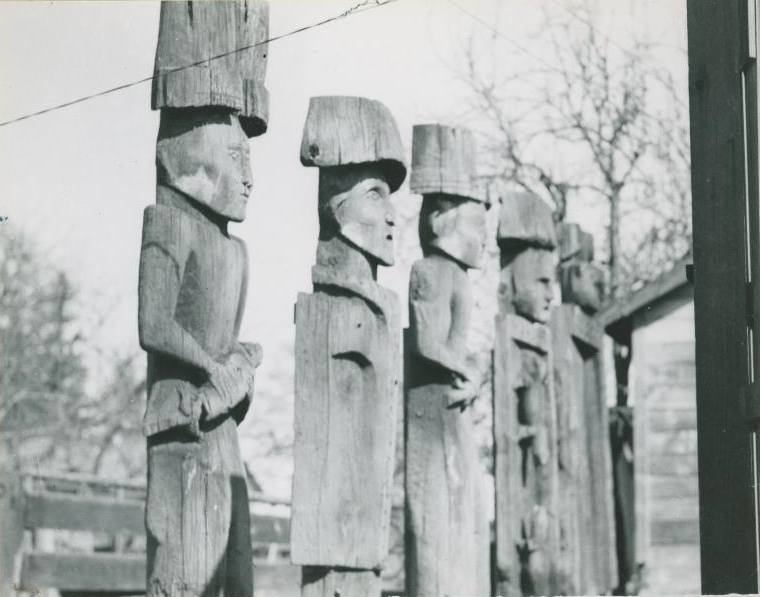
The house posts at Koksilah about 1935. Photograph by BC Police Commissioner T. W. S. Parsons. PN 1482.
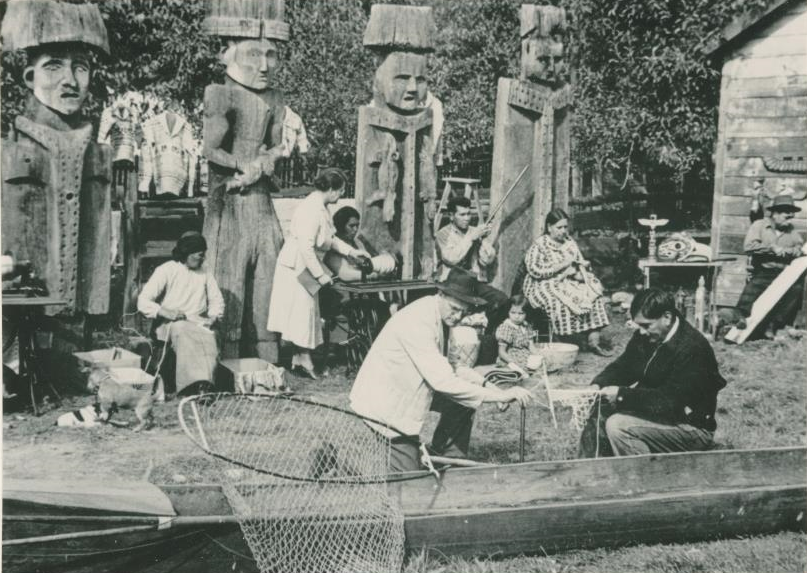
Mr. and Mrs. Herbert Corfield with members of the Charlie family who are preparing wool, knitting, and carving in front of the house posts behind the Corfield’s store at Koksilah, 1938. The lady on the left, known as ‘Old Elizabeth,’ spins wool against her thigh in the traditional manner while beside her a younger relative uses a spinning machine. Finished Cowichan sweaters hang behind the posts. Corfield family photograph. PN 17592.
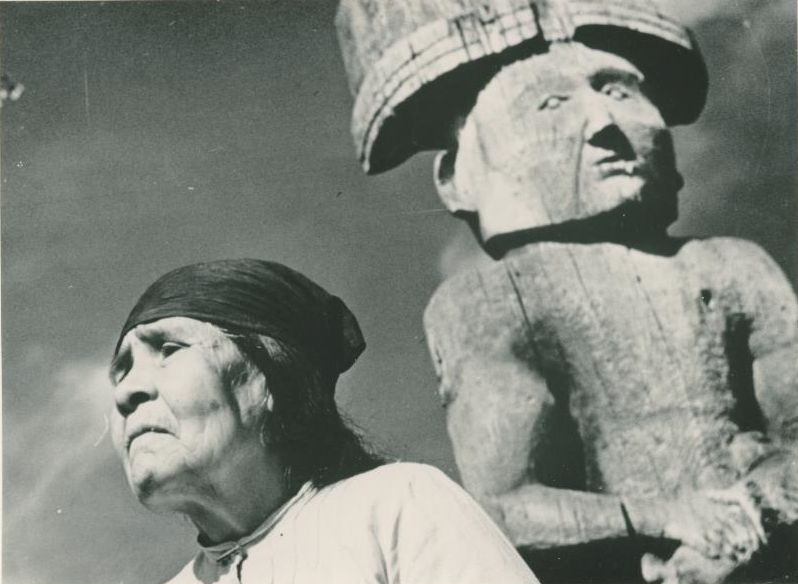
The elder known as ‘Old Elizabeth’ with one of the house posts at The Canoe store, Koksilah, 1938. Corfield family photograph. PN 17593.
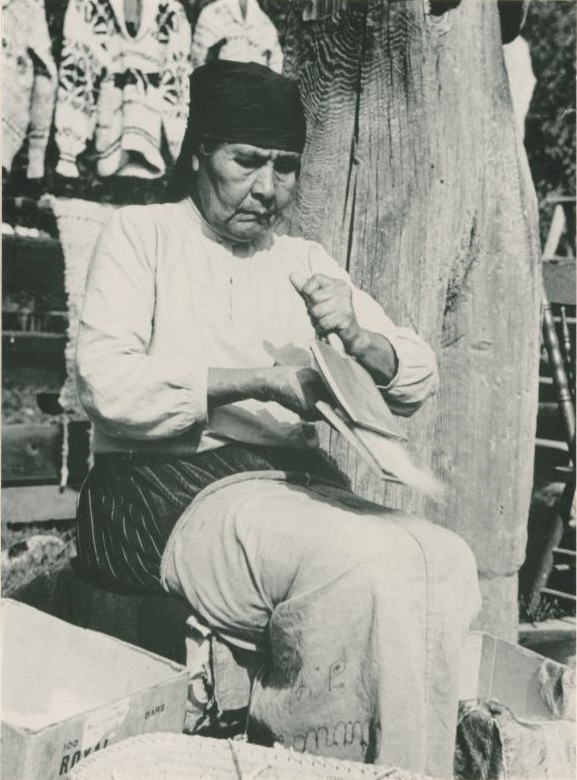
‘Old Elizabeth’ sits beside one of the house posts and cards wool for making Cowichan sweaters at The Canoe store, Koksilah, 1938. Corfield family photograph. PN 17596.
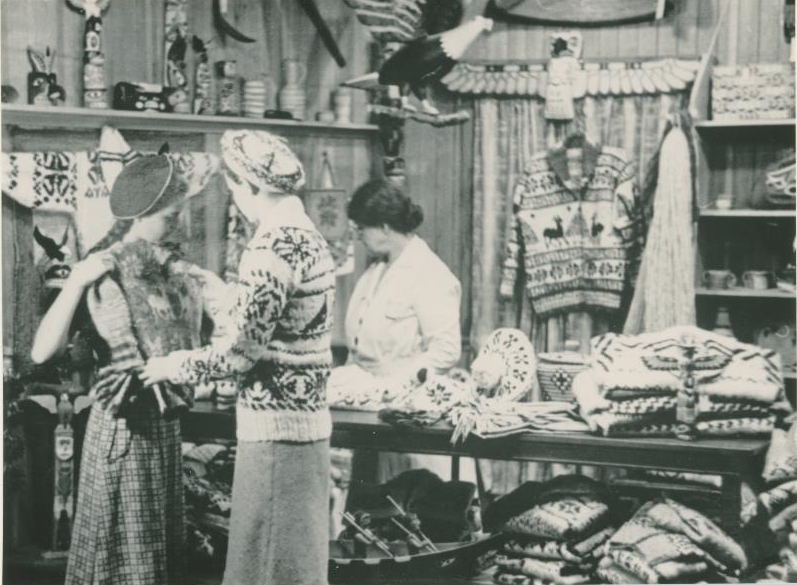
Cowichan sweaters and carvings for sale in The Canoe store at Koksilah, 1938. Corfield family photograph. PN 17594.
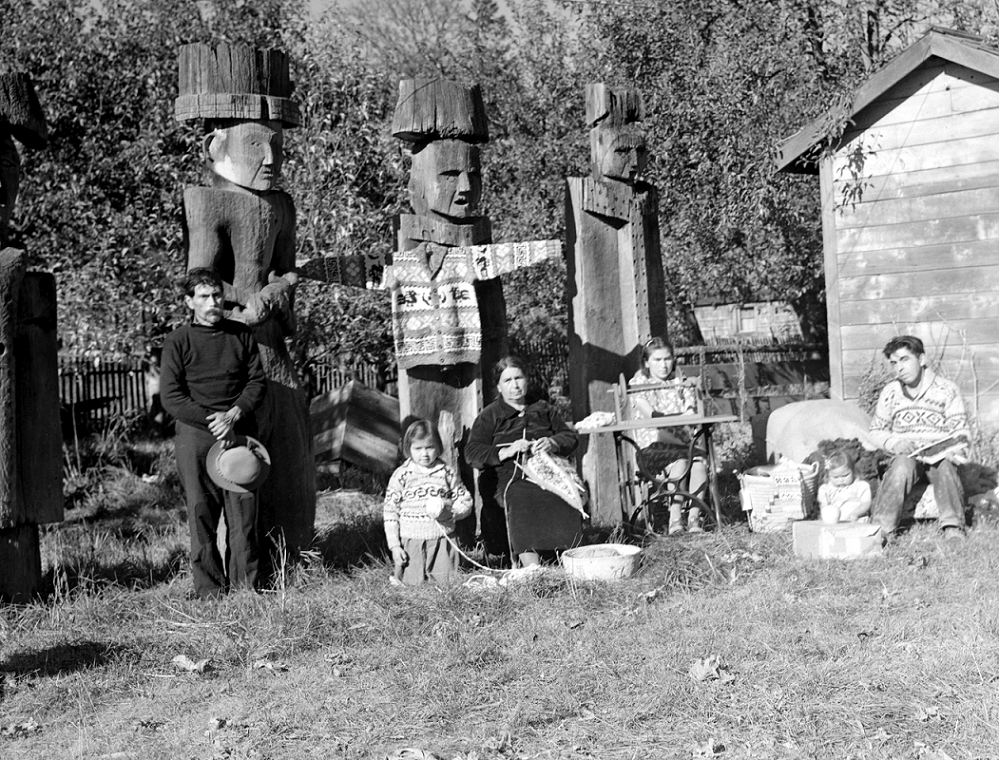
Members of the Charlie family preparing wool and knitting at The Canoe store, 1941. A finished sweater is displayed on one of the posts. I-27559.
JOURNEY
Today
Four of the posts (RBCM 5705, 5706, 5708, 5709) now stand together, facing Belleville Street, in the large window on the main floor of the Exhibits building. One of the posts (RBCM 5707) is on loan to the Simon Fraser University Museum of Ethnology and Archaeology in Vancouver.
Although removed from their home village and stripped of their traditional context, Puykwilum’s house posts still speak powerfully of Coast Salish art and culture, still express Kwa’mutsum history, and are still connected to the people of Qw’umqwiimut village. Contemporary Coast Salish artists are studying traditional works like these Kwa’mutsum house posts and adapting the style for new monumental carvings throughout the territories of the Coast Salish peoples.
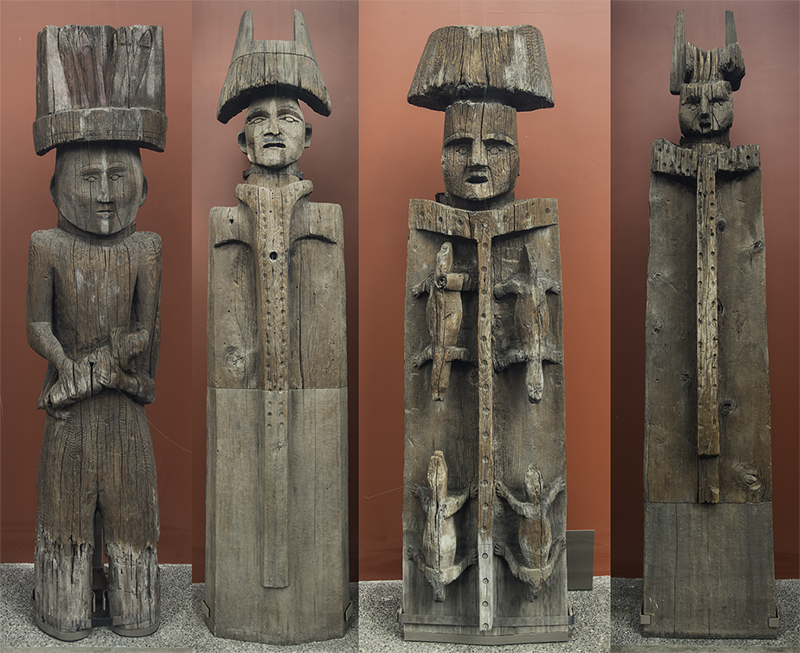
The house posts on display behind glass at the Royal BC Museum.
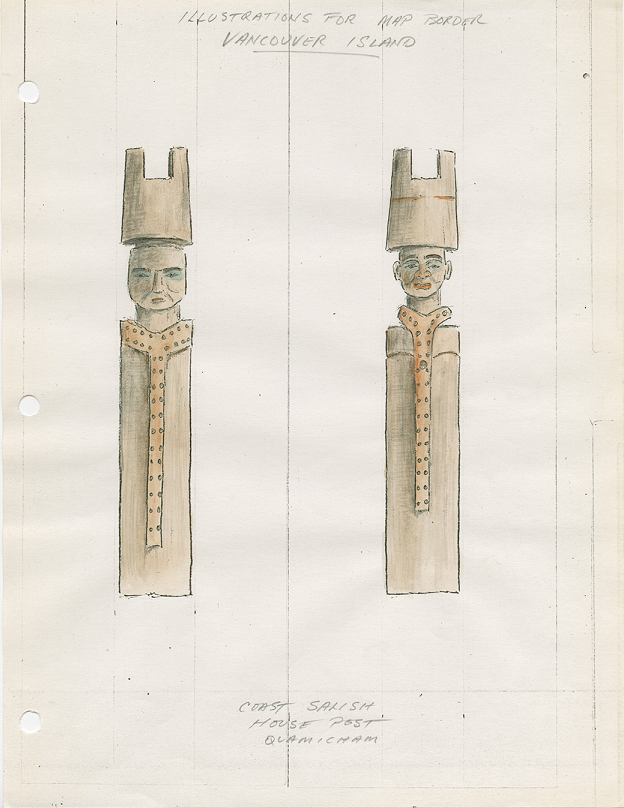
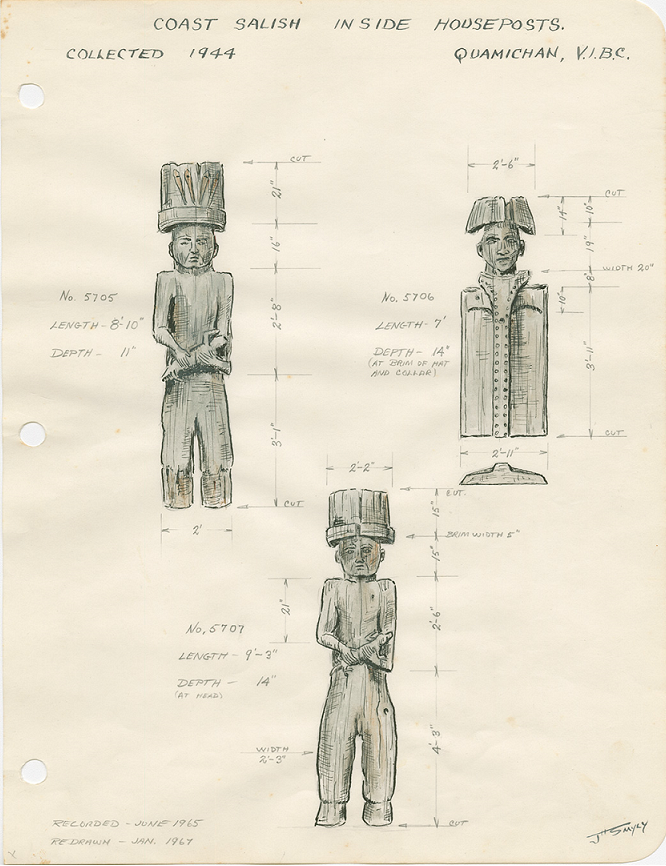
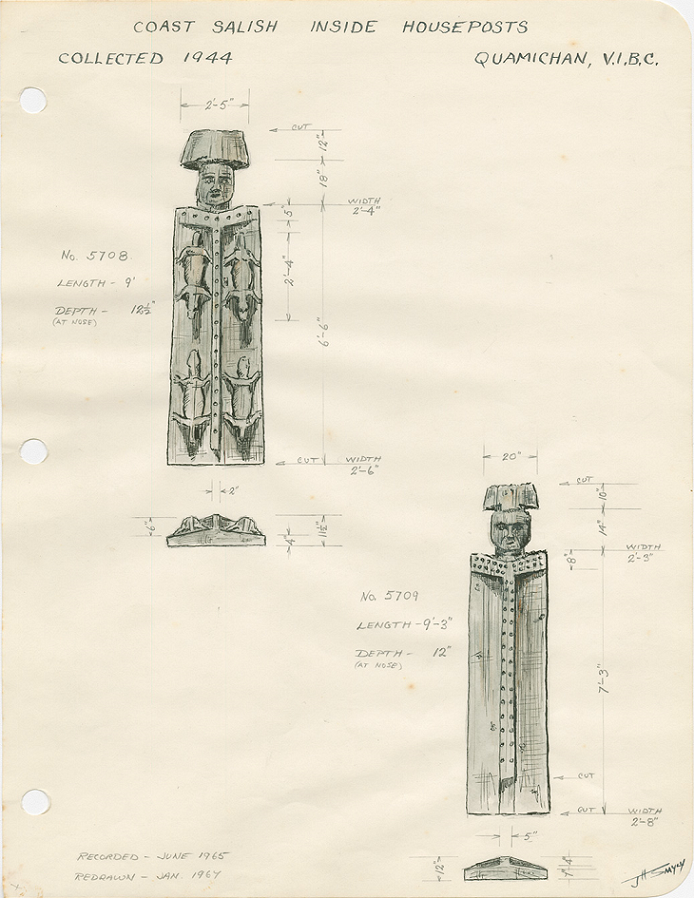
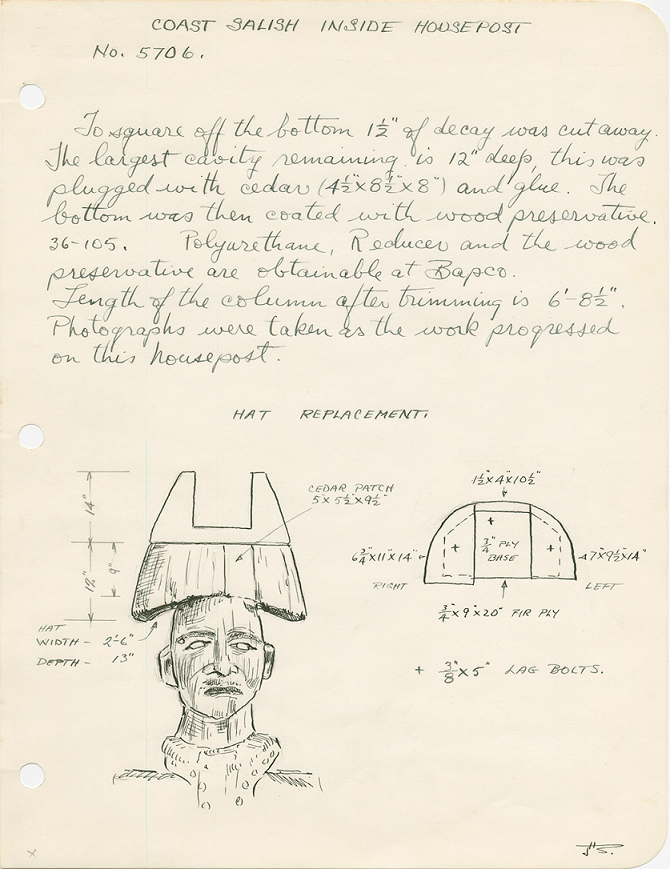
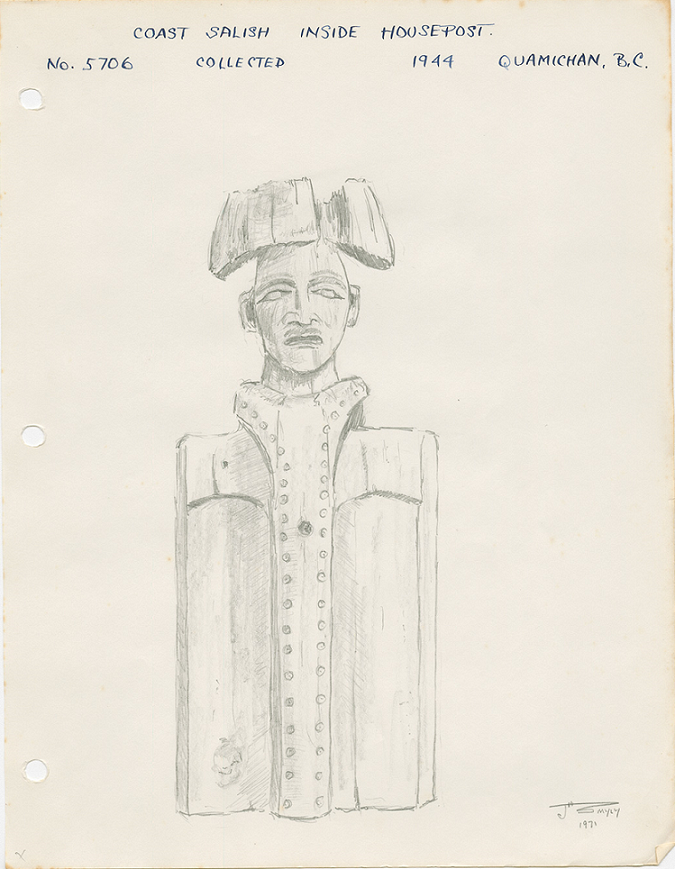
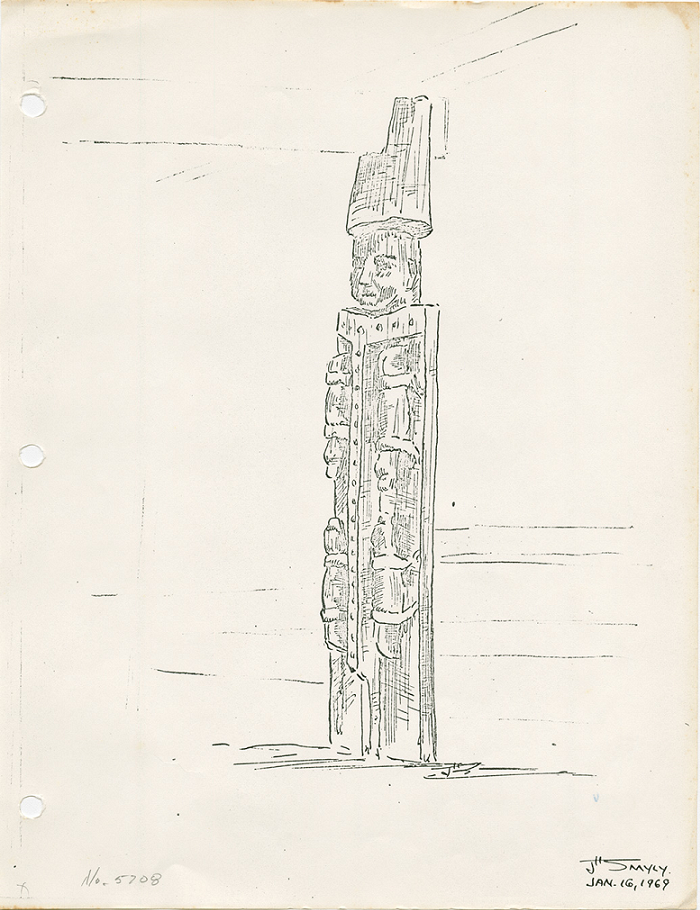
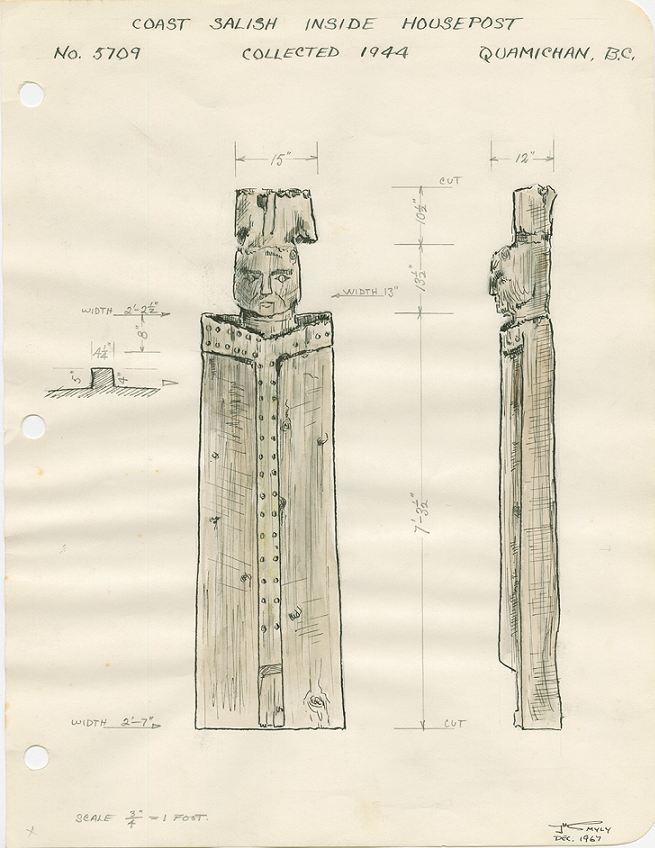
John Smyly, a museum technician, made detailed drawings and documented the work he did to restore and stabilize the posts when they were acquired by the Royal BC Museum.
CONNECTIONS
Related Carvings
The Sampson Family
The Sampson Family
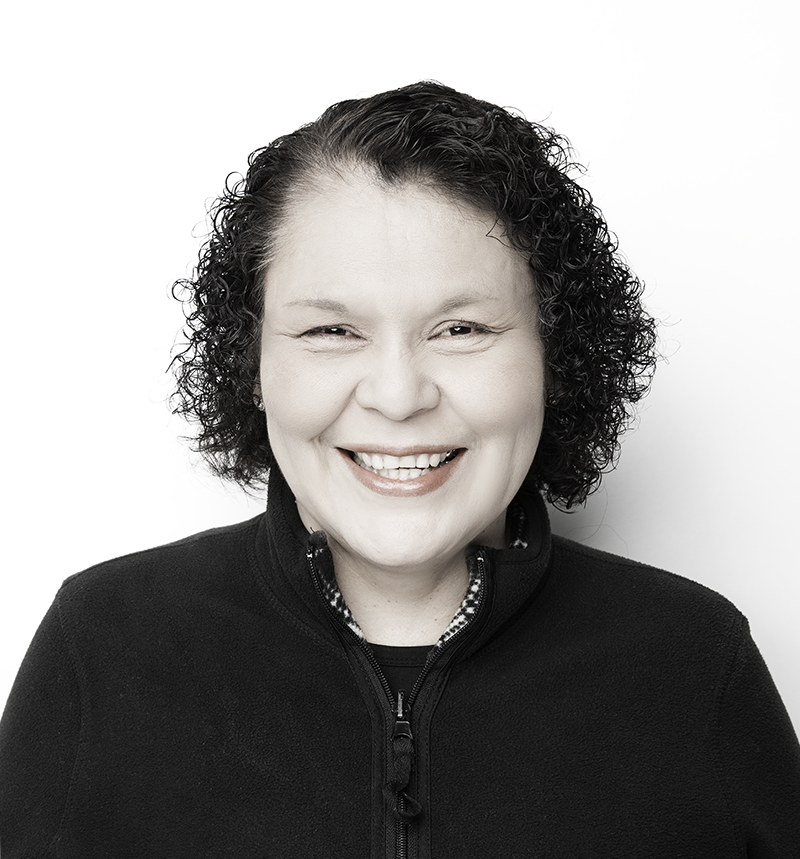
This section was a combined effort on the part of:
Anthony Sampson Jr – LENECTET – Age 12 – Pacific Christian School – Grade 6 - Coast Salish (Songhees/Tsartlip – Nez Perce)
Aaliyah Sampson – TTASELWET – Age 11 – Pacific Christian School – Grade 6 - Coast Salish (Songhees/Tsartlip – Nez Perce)
Tom Sampson – TTASELEK - Coast Salish (Tsartlip) – Nez Perce
Under the Guidance of Sheila Sampson, Collections Assistant at the Royal BC Museum.
While researching the project, it wasn’t just about listening to the history. We actually went to visit the sites where some of the houses were. This gave us a better insight and understanding of our history culture. The grandchildren went to four of the language classes to receive a better understanding of how important the language is! This has been an inspiring project and a good learning lesson for us all!
Explore a curated selection of Royal BC Museum objects and contemporary photographs that inspire this community member to continue working in the tradition.
Additional Information:
Coast Salish through history did not have totem poles. They had house posts which identified families by who they were. Symbolisms on the pole not only identified families, but also history for names, relations/family. But also, the birthright for ceremonies.
Attached are photos of a site we visited in Halat, where houses stood and we discussed the history of the land; names, relations. The meaning for Halat, is carving on the walls; which meant that everything that needed to be known was carved into the wall at the house, so members of the family would always have that as a reminder.
Totem poles are contemporary and they still have symbolism which tells a story/meaning of the pole. Example: Two totem poles were carved; one for New Zealand and the other for Victoria. Delegation was sent to New Zealand for the raising of the poles which were raised simultaneously at the same time with it being televised. This connects the two cities for the commonwealth games - sister cities. One Pole was carved by C. August, which sits on the legislative lawns and he is from Cowichan Tribes and the other was carved by Tim Paul from the Nuu-chah-nulth Nation.
Sheila Sampson
Anthony Sampson Jr
Aaliyah Sampson
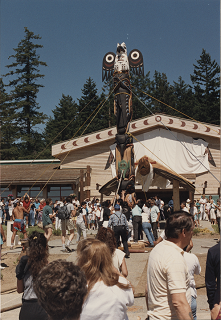
It's what today's generation is doing. It is the new idea of the First Nation's people.
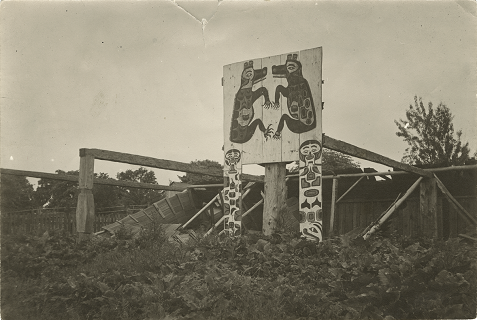
The carvings:it's our culture, it's the way it is with the carvings inside of the bighouse.
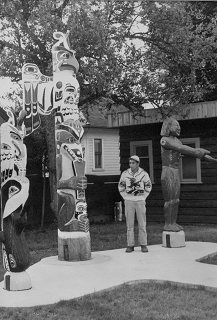
There weren't poles like this in this new generation.
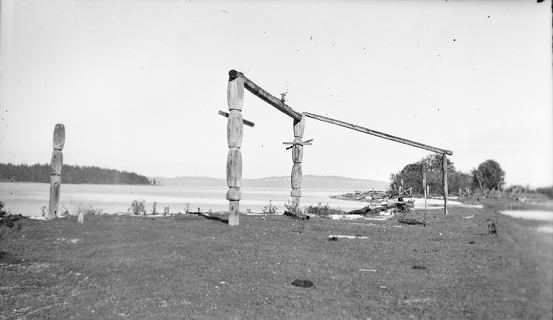
There outside is the marker for the bear, wolf, the lightning/thunderbird.
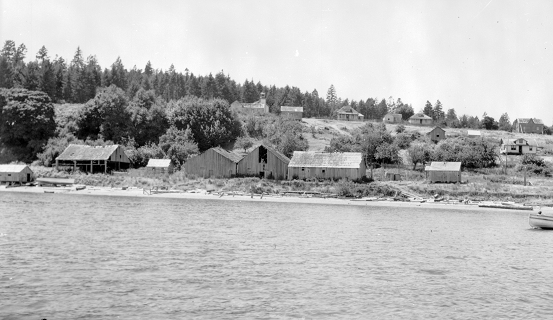
This is how our sacred beliefs are in our sacred ceremonies.
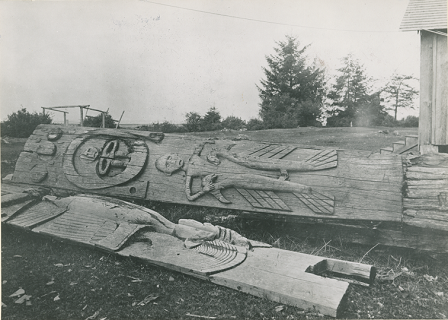
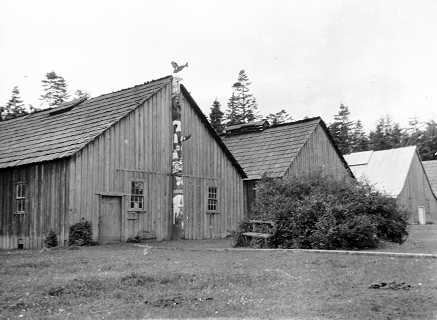
Now today, they show the totems outside, not inside.
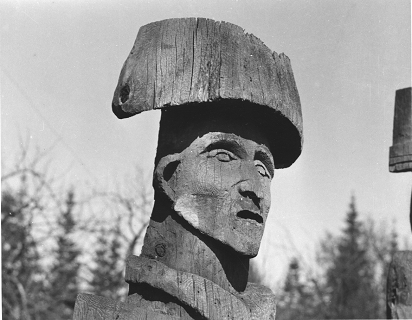
"lt's the marker," my relatives told my great grandfather of Halalt.
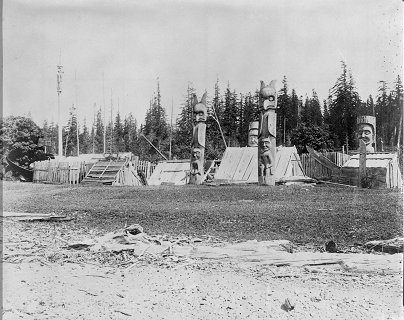
There are a lot totem pole markers that are outside.
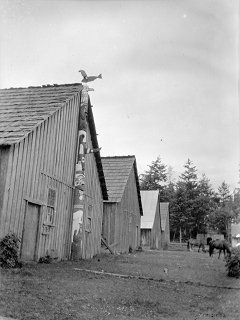
Everything was inside of our homes, the big house.

